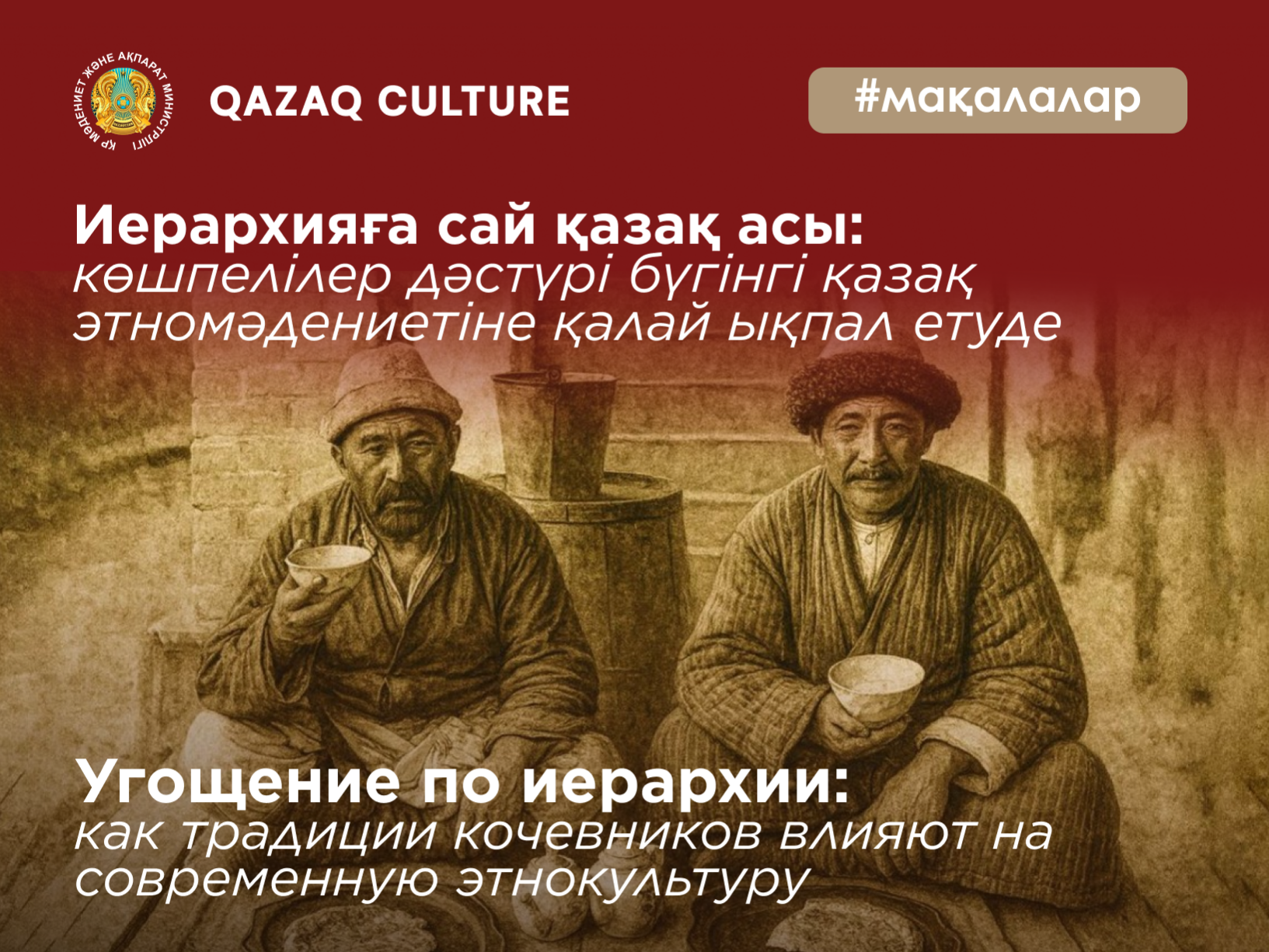Treating by Hierarchy: How Nomadic Traditions Influence Modern Ethnoculture

For nomadic peoples, food has always been more than just a meal.
It reflected social status, age, family roles, and respect for the guest. In nomadic society, each dish and its parts had symbolism, and the order in which food was served was subject to strict rules. Today, when ethnic culture is once again experiencing a revival, researchers and practitioners find in these culinary traditions the key to understanding the social structure and cultural identity of the Kazakhs.
Hierarchy at the dastarkhan
In traditional Kazakh society, the main places at the dastarkhan were occupied by aksakals - clan elders or respected guests. They were served the most honorable parts of the meat.
The ram's head was given to the most honored guest or aksakal. He not only divided it, but also symbolically distributed the pieces among the others, showing respect and wisdom.
Thigh (zhambas) - was intended for older men, a symbol of strength and authority.
The brisket and ribs were often given to young men and warriors as a sign of courage.
The tongue was given to eloquent speakers, akyns.
The liver and heart are a symbol of vital energy, often given to children and young men to strengthen their health.
Thus, food became not just a means of saturation, but a tool for strengthening the social structure.
The hierarchy at the table reflected the deep values of nomadic culture:
respect for elders,
honoring the guest,
educating the younger generation through the symbolism of food,
awareness of the relationship between man and nature.
It is important to note that in the Kazakh tradition, the guest was always above the family hierarchy. Even if a stranger came, he was given a place of honor and the best parts. This showed the openness and generosity of the steppe people.
And what about the modern world?
Today, these practices are once again becoming relevant - albeit in a modified form. At ethno festivals and tois, the revival of the ritual of serving a ram's head and the symbolic distribution of meat parts is used as a form of cultural demonstration.
In restaurant ethno cuisine, chefs serve dishes based on old traditions, creating a gastronomic experience with historical overtones.
For young people, this becomes a way to touch the roots - to understand that behind simple actions there was a philosophy of respect and hierarchy.
"The revival of these traditions is not about archaism, but about finding support in the past. In the context of globalization, when national identity is eroding, symbolic rituals around food are becoming an instrument of cultural self-presentation," experts say.
The hierarchy of food serving among nomads was not accidental. It was a way to consolidate social roles, express respect and educate youth. Today, by returning these traditions through ethno projects, festivals and gastronomic practices, Kazakhstan is rediscovering a rich cultural layer for itself and the world.
Food becomes a language that tells about the past and shapes the national identity of the future.
Ethnorestaurants today
Today in Kazakhstan you can see how ancient rituals of serving food are given a new life in restaurants, ethnoparks and festivals.
Ethnoaul "Kazakh Ethnopark" (Astana) - during the Nauryz holidays and international cultural festivals, a ceremony of cutting up a ram's head is held here. The guest is trusted with the right to distribute the honorary pieces, explaining the symbolism of each part. This becomes a bright ethnopresentation for foreigners.
Restaurant "Altyn Orda" (Almaty) - the menu includes dishes with elements of traditional distribution. For example, serving lamb is accompanied by a story from the waiter about who in ancient times was intended for different parts of the carcass. Thus, dinner turns into an ethnocultural lesson.
Nomadic Culture Festival in Turkestan — during cultural programs, reconstructions of a traditional dastarkhan are held, where you can not only try baursaks, kumys or beshbarmak, but also see how meat was distributed among elders, youth and children according to hierarchy.
Ethnotourism for foreigners — many tour operators include “dinner with nomads” in their routes, where the guest is entrusted with the honorable role of host. For tourists, this becomes not just a meal, but a “living history” in which they themselves participate.
Thus, rituals that seemed forgotten are returning to gastronomic tourism, the restaurant business and ethno projects. This helps Kazakhstan form a unique cultural brand, where food is the history of the people.